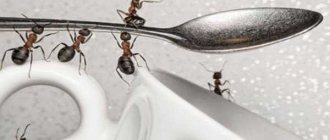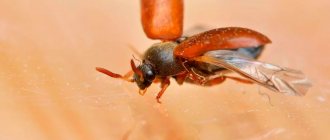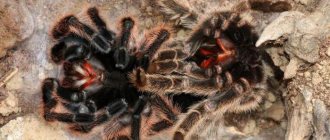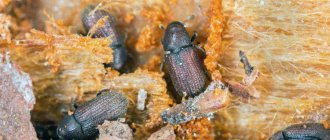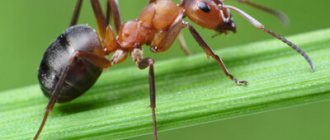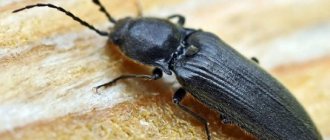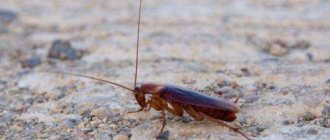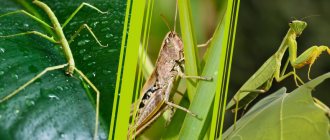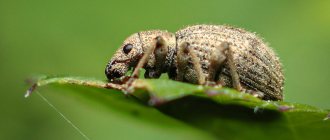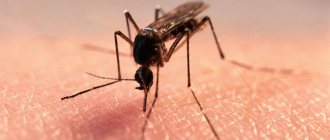Of course, many insects go to winter. This is how nature intended it, because in the spring they will have to give birth to a new generation, and the cycle will continue. However, it should be noted that different species of these representatives of the animal world winter in different conditions. Some simply go into hibernation for several months, and some carefully prepare for winter, because without this their species will simply die out. Today we’ll talk about what insects do in the fall to survive the cold, and we’ll also figure out which species survive the winter and how.
How do bees winter?
Bees do not hibernate, although they spend the winter in a dry and warm place. For domestic insects, beekeepers create all the necessary conditions, but as for wild insects, they have to take care of themselves. There are several features that are inherent in this species. These include:
- slowdown and then complete cessation of egg laying by the uterus;
- the constant presence of insects in the nest during cold snaps, because they have to maintain a constant temperature for the development of the “younger generation”;
- When the first cold weather sets in, any bee flights stop, they form a lump or club and sit almost motionless. Moreover, only the upper part of this club is located on honeycombs, the rest is located on empty ones;
- if a warm day suddenly arrives, the insects leave their nest and go out to fly around the area. If the beekeeper hides the hives in a dugout or cellar, on such days they must be taken out. Flight is necessary to cleanse the intestines. The later it is produced, the better for the swarm;
- bees hibernate in the club all winter. As a rule, there are up to 35,000 individuals. The bee club is like a single organism. If the insect becomes cold, it will climb into the center, where the temperature is higher. If someone gets hungry, he will climb up to where the honeycombs are. The movement does not stop for a minute, although the club does not disintegrate until the very end of the cold weather;
- Empty honeycombs are used by bees as warm clothing; if an insect freezes, it can climb into the cell to bask, where it is warm and comfortable.
As you can see, bees are able to withstand the cold absolutely calmly. To do this, they have developed a unified mechanism of action that allows the swarm to remain viable.
Insects are able to survive even frost of -50 degrees in the club.
What are speech logic tasks for children?
A speech logical task is a story - a riddle. A child can find the answer to it only if he has an understanding of nature and can compare, classify, and find relationships. Solving speech logical problems helps develop thinking and speech, teaches the child to distinguish between the main and the secondary, draw conclusions, and explain his point of view.
This article is a continuation, the third part of a series of articles about autumn - stories, riddles, and puzzles for children about autumn nature.
You will find many interesting speech logic problems for preschool children in the book by N.F. Vinogradova “Stories - riddles about nature” (Ventana - Graf publishing house).
How do ants winter
Today, thousands of species of ants are known, many of them using different mechanisms to cope with cold weather. First of all, it should be noted that some species overwinter classically - in hibernation. Some continue to actively work for the benefit of the anthill, and it is about them that we will talk further. Features of wintering ants are as follows:
- In winter, egg laying stops. The queen will continue to lay eggs no sooner than warm weather returns;
- Before the onset of cold weather, insects carefully “seal” all entrances and exits from the anthill. The materials for this can be very different: this is earth, and small pebbles, and plants, and other objects that the working individuals manage to find;
- the anthill has a complex system of corridors and passages. Deep passages are dug especially for the winter period. It is in them that the ants go to winter, because it is warm and comfortable for them;
- If insects do not hibernate, life continues to boil. There really is enough work in the anthill. Working individuals tidy up the filled passages, feed the offspring, monitor the temperature in the passages, etc.;
- Before wintering, food preparation is required. All “inhabitants” need constant nutrition, so preparation is carried out very intensively. In the anthill there are special chambers in which a supply of food is stored. This includes all kinds of seeds, fruits, dried plants and much more. The stock never lies in one place, because even minimal fluctuations in temperature and humidity can destroy it. Therefore, ants constantly transport supplies from one chamber to another, from the upper to the lower.
The habitat of ants is huge and the question may arise: how do they live in the north? A special feature of this type of insect is its exceptional resistance to frost. Of course, at a temperature of -50 degrees, not a single anthill will help. But ants are still able to survive these adversities. Moreover, there are known cases in which the larvae calmly withstood temperatures down to -57 degrees!
Of course, there can be no talk of any activity at such temperatures, therefore, in severe cold weather, representatives of this species hibernate. They manage to survive the winter thanks to some anatomical features. A pattern has been noted: as body temperature decreases, the amount of sugary substances in the ant cell increases. With warming, the opposite situation occurs. Therefore, ants are able to survive even in the Arctic if there is food for them there.
In the soil
Pests prefer their natural habitat - the ground - for hibernation. All they need is to bury themselves deeper, because the soil usually freezes to a certain point. Larvae and some adults hide in fallen leaves, so it is better for gardeners and gardeners to remove them in the fall. There are also pests that are not easy to get hold of: the Colorado potato beetle goes 25 cm deep, and the mole cricket goes 2 m deep! At this depth, it is practically not in danger of freezing, and the insect can live up to 3.5 years.
How do other fauna representatives winter?
A considerable number of insects spend the winter. Those species that are not able to withstand the cold produce eggs and the next year the eggs will necessarily hatch into offspring necessary for procreation. If we talk about wintering of insects, it differs significantly among different species. Let's look at some cases:
- The hives and peacock's eye butterflies wait out the cold by burying themselves in foliage or hiding in twig branches. In such heaps, the temperature normal for their existence is maintained. After leaving, they go into hibernation.
- Flies and mosquitoes. These types of insects try to hide in residential buildings, basements, cellars and other places closer to humans.
- Wasps and hornets overwinter by burrowing deep into the soil or into pine needles. It is important to highlight an interesting feature here: only females hibernate. Males and the “working class” die in order to be born in the warm season.
- Ladybugs. They also overwinter in dry leaves, but this is not what is interesting about them. In the warm season, representatives of this species live on their own. Other ladybugs do not arouse any interest in them. But before the cold weather, they accumulate in hundreds, after which such a flock occupy warmer places.
In the soil
Pests prefer their natural habitat - the ground - for hibernation. All they need is to bury themselves deeper, because the soil usually freezes to a certain point. Larvae and some adults hide in fallen leaves, so it is better for gardeners and gardeners to remove them in the fall. There are also pests that are not easy to get hold of: the Colorado potato beetle goes 25 cm deep, and the mole cricket goes 2 m deep! At this depth, it is practically not in danger of freezing, and the insect can live up to 3.5 years.
On winter holidays
Some insects overwinter on an alternative, often woody, winter host plant. For example, fruit aphids spend the summer on a number of herbaceous plants, but are considered pests of garden fruit trees and shrubs, their winter and spring hosts. Most species overwinter as eggs, laid in crevices in the bark and near the buds.
Pests such as pink apple aphid (Dysaphis plantaginea) and plum leafroll aphid (Brachycaudus helichrysi) can be controlled in winter by using a winter wash with vegetable oil to kill the eggs.
Conversely, the black bean aphid (Aphis fabae) is a widespread pest of summer plant hosts, which include beans and some ornamentals. Dense colonies form on young, soft plants. The pest spends the winter as eggs laid on shrubs such as viburnum, Philadelphia and euonymus, and the winged adults migrate in May.
Insects that don't sleep
Damaged lawn
Not all insects become inactive during the winter months, and there are some that are especially harmful at this time of year. Larvae, particularly the larvae of the May beetle (Phyllopertha horticola), Welsh chafer (Hoplia philanthus) and weevil (Otiorhynchus sulcatus) are pests of lawns. The aforementioned beetle larvae feed on grass roots from autumn to spring, and weevil larvae feed on the roots of a wide range of plants during the same period.
Adult moths, pests of fruit trees such as the winter moth (Operophtera brumata), spotted yellow moth (Erannis defoliaria) and March butterfly (Alsophila aescularia), are also active during the winter. The wingless females emerge from the soil between November and April to lay eggs in the branches. They can be easily controlled by applying grease strips and barrier adhesive to the trunks between fall and spring.
Other known winter pests include; greenish spruce aphid (Elatobium abietinum), a sucking insect that causes needles to fall on spruce trees (Picea spp.); slugs that remain active at temperatures above 5°C; and the elongated cushion moth (Pulvinaria floccifera), a pest of evergreen trees and shrubs, which becomes especially noticeable in winter when sooty mold grows on the honeydew secreted by overwintering nymphs.
It's also easy to forget about pests of indoor and greenhouse plants, such as mealy bugs, greenhouse whiteflies (Trialeurodes vaporariorum) and scale insects, which can be active year-round. Washing pots and trays after use, cleaning the greenhouse, and inspecting new plants will prevent infestations from developing.
Logic problems about autumn for children with answers
Speech logical task 1. What did the hedgehog say? (developed by Natalya Fedorovna Vinogradova)
“Everyone prepares for winter in their own way. The squirrel is jumping - fidgety. Collects nuts and acorns, places them in hollows, through wood crevices, and hangs them on bushes. The squirrel works all day and keeps looking at its neighbor, the hedgehog, who by autumn has become completely lazy: he doesn’t run around in the forest much, doesn’t catch mice, climbs into dry leaves and dozes. - Why are you so lazy, hedgehog? - asks the squirrel. – Why don’t you prepare for winter and stock up on food? In winter there will be nothing to eat. The hedgehog laughed and said something quietly to the squirrel.”
Answer to the problem:
What does a hedgehog actually do in the fall? Remember with your baby
Text of the story - a logical task for children:
Answer to logic problem:
Speech logical task 3. For children 6-7 years old. What did Dunno mix up?
Problem text and answers:
Tell me, what's wrong here? Correct Dunno:
Speech logical task 4. What is the bear looking for? Author of the text: I. A. Panichev
Text of a logical speech task for children:
Look at the clubfoot! He can barely toss and turn. He gorged himself on fish and berries in the summer, and now he’s wandering through the forest, scaring the little animals and looking for something, looking for something... What is the bear looking for?
Answer to logic problem:
It’s time for the bear to fall asleep in the den, so he wanders through the forest, confusing his tracks before climbing into the den and falling asleep.
Speech logical task 5. Who is this? About the bunny. Author of the text: I. A. Panichev
Logical problem text:
